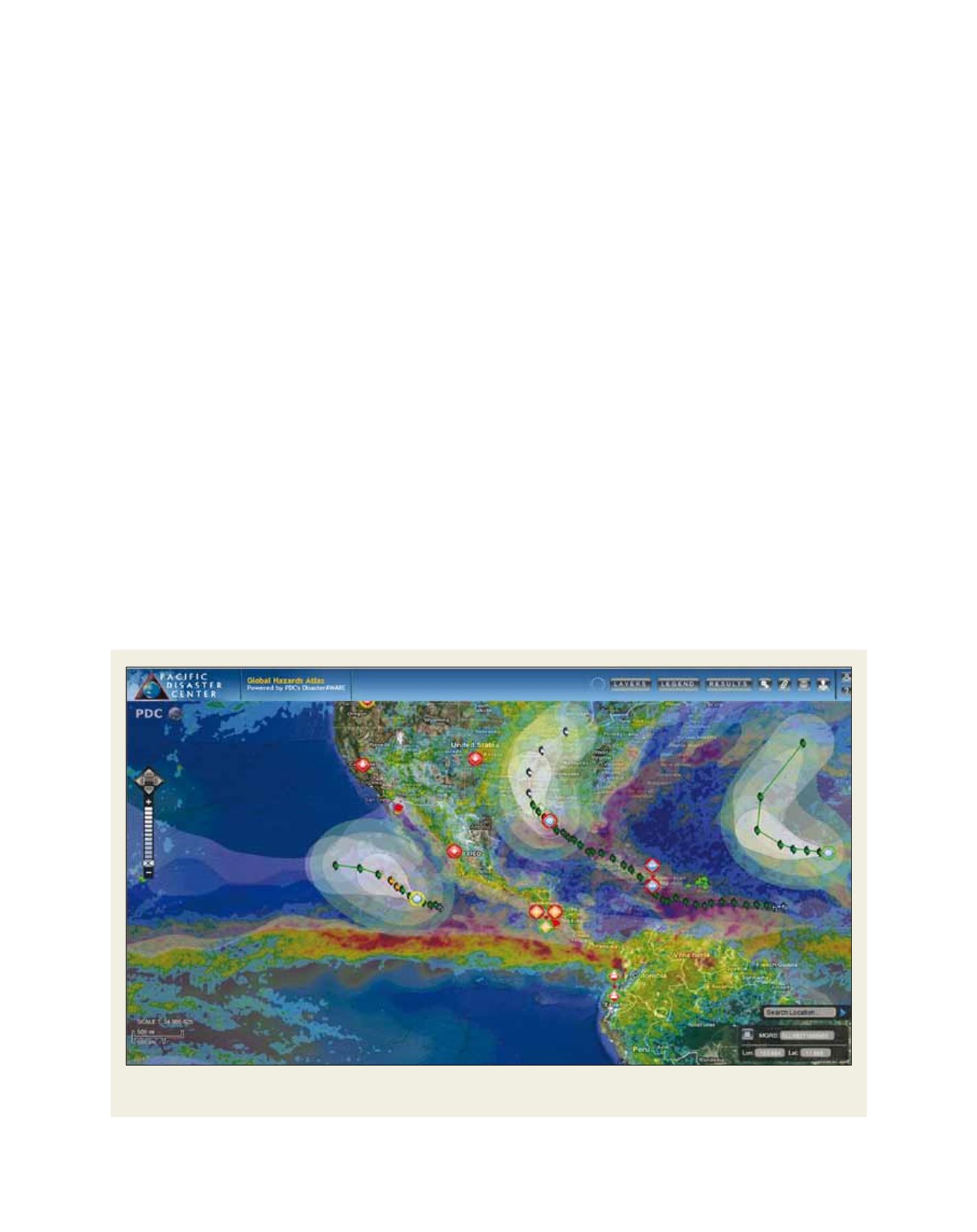

core reality – and they will. Already, disaster information
can reasonably and reliably move in one direction using
services like blogs, SMS, instant messaging, chat rooms,
online forums, wikis, YouTube channels, LinkedIn,
Facebook and Twitter. At the same time, mobile phones
have proven their value when responders, especially
search-and-rescue teams, can use them to locate victims.
Despite the seemingly inexorable collision of popula-
tion, urbanization, globalization and climate change risk,
as well as an overriding uncertainty about the future, there
are distinct rays of hope in the planning for future climate
change. In particular, increasing knowledge of the causes
and effects of climate change allows for a clearer definition
and prioritization of risks essential for both mitigation and
adaptation planning. As a result of these inputs, many of
the world’s largest urban centres are developing new and
innovative approaches for disaster risk reduction, andmost
importantly, climate change mitigation and adaptation is
rapidly becoming a ‘whole of society’ concern. While the
world and the urban centres prepare for the future, disaster
managers worldwide are a step away from being able to
collect, consume, analyze and share the massive amount
of data being generated worldwide and by users of mobile
devices and online services. These activities will catapult
all phases of disaster management to previously unknown
levels of responsiveness and effectiveness, giving reason to
hope that we can overcome the current challenges, includ-
ing climate change, even in a world of billions and among
people who are concentrated in megacities.
[
] 213
U
rban
I
ssues
Development of new data, including calculations of potential
climate change impacts, is underway around the world. The process
may need to be accelerated, but not at the expense of rigour or the
greatest level of detail and smallest level of scale possible. The demand
for innovation in information and communications technologies will
continue to grow with the pressures of population growth, urbaniza-
tion and climate change. If developments in meaningful technology
do not come fast enough, these changes in the human situation will
overwhelm coping capacity, again multiplying the impacts of disasters.
New technologies, data and uses
Given all the pressures of population, urbanization and climate
change, effective emergency management is possible only in an
environment where data flows rapidly both to hazard-affected popu-
lations and emergency service providers. Mobile devices make it
possible to deliver real-time, place-specific information to those who
need it – victims and service providers alike. Mobile applications,
including PDC’s Disaster Alert, also increase real-time situational
awareness for those who are threatened by disaster and those
responding with assistance. The disaster data that is collected and
analysed is, more quickly than ever before, reaching those in peril,
but new technologies also offer a tantalizing possibility that they will
become sources of new data as well.
There are challenges to be overcome in order to access and make
use of the wealth of new data from social media and mobile messag-
ing. Tapping these vast open sources of information means gathering
misleading statements along with great stores of accurate facts, for
instance. Analysts will have to learn to deal with these outliers, and to
recognize the points of information that either define or contradict the
Source: PDC
The power of information fusion: a DisasterAWARE screenshot from 28 August 2012 showing three tropical cyclones overlaid on storm intensity
zones, seven-day cumulative rainfall (observed), sea surface temperature (observed) and expected rainfall (modeled)
















